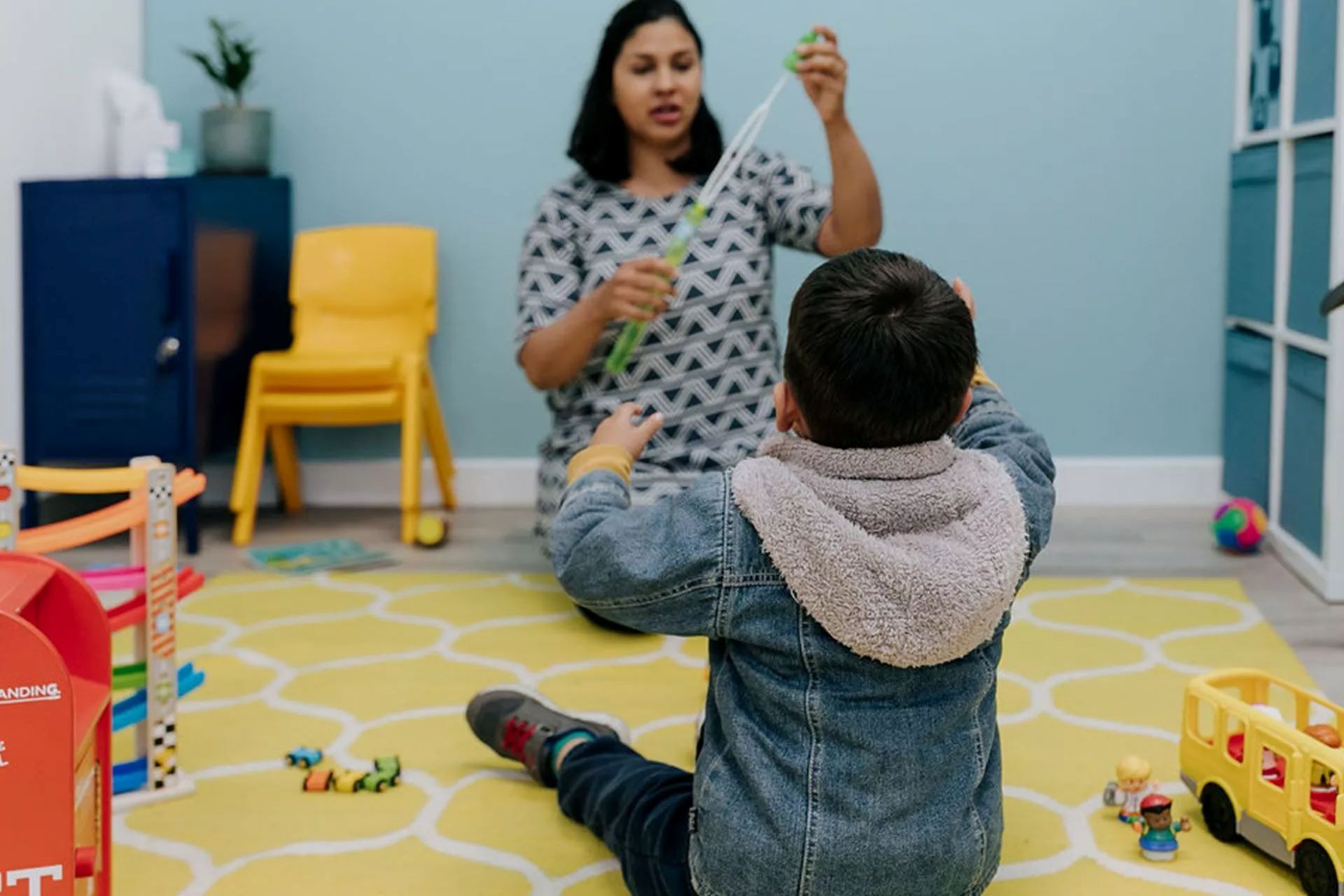Home>Parenting and Children>5 Tips For Handling An Older Autistic Child


Parenting and Children
5 Tips For Handling An Older Autistic Child
Published: January 5, 2024
Discover effective parenting tips for handling an older autistic child. Learn strategies to support your child's unique needs and foster a positive family environment. Ideal for parents seeking guidance on parenting and children.
(Many of the links in this article redirect to a specific reviewed product. Your purchase of these products through affiliate links helps to generate commission for Regretless.com, at no extra cost. Learn more)
Table of Contents
Understanding Your Child's Needs
Understanding the unique needs of an older autistic child is crucial for providing effective support and fostering a positive environment. Every autistic child is different, and it's essential to recognize and appreciate their individuality. By gaining insight into your child's specific challenges and strengths, you can tailor your approach to meet their needs more effectively.
Autistic children often experience sensory sensitivities that can significantly impact their daily lives. For some, certain sounds, textures, or lights may be overwhelming, leading to distress or discomfort. By paying attention to your child's reactions and observing their triggers, you can create a more sensory-friendly environment that minimizes potential stressors.
Additionally, many autistic children thrive on predictability and structure. Changes in routine or unexpected transitions can be particularly challenging for them. Establishing a consistent daily schedule and providing advance notice of any changes can help alleviate anxiety and provide a sense of security.
Furthermore, it's important to recognize that communication may present unique challenges for older autistic children. Some may struggle with verbal communication, while others may have difficulty understanding non-verbal cues. Taking the time to learn and understand your child's preferred communication style can significantly enhance your ability to connect with them.
Moreover, recognizing the potential for intense focus and passion in autistic children is essential. Many individuals on the autism spectrum have specific interests or hobbies that they find deeply engaging. Embracing and encouraging these interests can be a powerful way to connect with your child and provide opportunities for growth and self-expression.
By understanding your older autistic child's needs, you can create a supportive and nurturing environment that empowers them to thrive. This understanding forms the foundation for implementing effective strategies to address their challenges and celebrate their unique strengths.
Creating a Structured Routine
Establishing a structured routine is paramount when caring for an older autistic child. Predictability and consistency provide a sense of security and stability, which can significantly benefit their overall well-being. By implementing a structured routine, parents and caregivers can help their child navigate daily activities more effectively while minimizing anxiety and uncertainty.
One of the key aspects of creating a structured routine for an older autistic child is to establish a predictable daily schedule. This can include designated times for waking up, meals, educational activities, playtime, and bedtime. By adhering to a consistent schedule, parents can help their child anticipate and prepare for each transition throughout the day, reducing stress and promoting a sense of control.
Moreover, incorporating visual aids such as visual schedules or picture-based timetables can further enhance the effectiveness of the routine. Visual supports can help autistic children understand and anticipate upcoming activities, making the daily schedule more accessible and comprehensible. This visual structure provides a clear and tangible representation of the day's events, aiding in smooth transitions and reducing anxiety related to unexpected changes.
Additionally, it's important to allow for flexibility within the established routine. While maintaining consistency is crucial, it's equally important to accommodate the individual needs and preferences of the child. Flexibility within the routine can empower the child to make choices within a structured framework, fostering a sense of autonomy and empowerment.
Furthermore, incorporating sensory-friendly elements into the daily routine can contribute to a more supportive environment for the child. For instance, creating designated sensory breaks or incorporating sensory activities into the schedule can help regulate sensory input and provide opportunities for relaxation and self-regulation.
Overall, creating a structured routine for an older autistic child involves thoughtful planning, consistency, and a deep understanding of the child's unique needs and preferences. By establishing a predictable daily schedule, utilizing visual supports, allowing for flexibility, and integrating sensory-friendly elements, parents and caregivers can create an environment that promotes comfort, security, and a sense of empowerment for their child.
Communicating Effectively
Effective communication is a cornerstone of nurturing a strong and supportive relationship with an older autistic child. It is essential to recognize that communication challenges are common among individuals on the autism spectrum, and as a parent or caregiver, employing effective communication strategies can profoundly impact the child's emotional well-being and overall development.
Understanding the unique communication style of an autistic child is crucial. While some children may struggle with verbal communication, others may find it challenging to interpret non-verbal cues such as facial expressions and body language. By observing and acknowledging the child's preferred mode of communication, whether it involves verbal language, sign language, visual aids, or augmentative communication devices, parents can establish a more effective and empathetic form of interaction.
Moreover, employing clear and concise language can facilitate better understanding. Using simple and direct sentences, avoiding ambiguous or figurative language, and providing visual supports when necessary can enhance the child's comprehension and reduce potential misunderstandings. Additionally, maintaining a calm and reassuring tone of voice can create a comforting and inviting atmosphere for communication, encouraging the child to express their thoughts and emotions more freely.
Active listening plays a pivotal role in effective communication with an older autistic child. It involves giving the child undivided attention, acknowledging their feelings, and being patient while awaiting their response. By actively listening to the child's verbal and non-verbal cues, parents can demonstrate their understanding and validate the child's experiences, fostering a sense of trust and mutual respect within the relationship.
Furthermore, incorporating the child's interests and preferences into communication can be highly beneficial. Engaging in conversations or activities related to the child's passions can create meaningful opportunities for connection and interaction. It is important to embrace the child's unique perspectives and interests, as this can serve as a bridge for effective communication and strengthen the parent-child bond.
Overall, effective communication with an older autistic child requires patience, understanding, and a willingness to adapt to the child's individual communication style. By recognizing and respecting the child's preferred mode of communication, utilizing clear and concise language, actively listening, and incorporating the child's interests, parents can foster a supportive and communicative environment that nurtures the child's emotional well-being and encourages their self-expression.
Encouraging Independence
Encouraging independence in an older autistic child is a pivotal aspect of their growth and development. It involves empowering the child to take initiative, make choices, and develop essential life skills that foster self-reliance and confidence. By nurturing independence, parents and caregivers can support their child's journey towards becoming more autonomous and capable individuals.
One effective approach to promoting independence in an autistic child is to provide opportunities for decision-making within a structured framework. Allowing the child to make choices, such as selecting preferred activities, clothing, or snacks, can instill a sense of autonomy and self-determination. These choices can be integrated into the daily routine, offering the child a sense of control and ownership over their experiences.
Moreover, incorporating life skills training into the child's daily activities can significantly contribute to their independence. Teaching essential skills such as personal hygiene, meal preparation, organization, and time management equips the child with practical abilities that enhance their self-sufficiency. Breaking down tasks into manageable steps and providing clear, visual instructions can facilitate the learning process and empower the child to perform these tasks independently.
Encouraging the child to engage in age-appropriate responsibilities within the household can also foster independence. Simple chores and tasks tailored to the child's abilities can promote a sense of contribution and accountability. Additionally, involving the child in decision-making processes, such as planning family outings or organizing their personal space, can nurture their confidence and decision-making skills.
Furthermore, promoting self-advocacy and self-expression is essential in fostering independence. Encouraging the child to communicate their needs, preferences, and emotions effectively empowers them to advocate for themselves in various situations. Providing opportunities for the child to express their opinions, interests, and aspirations can strengthen their self-esteem and assertiveness.
Overall, encouraging independence in an older autistic child involves creating a supportive environment that nurtures their decision-making abilities, life skills, responsibilities, and self-advocacy. By empowering the child to take initiative and develop essential competencies, parents and caregivers play a crucial role in fostering the child's independence and self-confidence, laying a foundation for their continued growth and success.
Seeking Support and Resources
Seeking support and resources is paramount for parents and caregivers of older autistic children, as it plays a pivotal role in providing comprehensive care and promoting the child's well-being. The journey of supporting an autistic child is multifaceted, and accessing appropriate support networks and valuable resources can significantly enhance the quality of care and the child's overall development.
One of the primary avenues for seeking support is connecting with autism support groups and communities. These networks offer a wealth of knowledge, shared experiences, and emotional support from individuals who understand the unique challenges and triumphs associated with raising an autistic child. Engaging with these communities can provide a sense of belonging, reduce feelings of isolation, and offer valuable insights into effective caregiving strategies.
Furthermore, pursuing professional guidance and expertise is essential for addressing the diverse needs of an older autistic child. Seeking support from qualified therapists, behavioral specialists, and developmental pediatricians can facilitate comprehensive assessment, tailored interventions, and personalized strategies to address the child's specific challenges. These professionals can offer valuable guidance in areas such as behavior management, communication skills, sensory integration, and academic support, empowering parents to make informed decisions and implement effective interventions.
Accessing educational resources tailored to the needs of autistic children is also critical. Collaborating with the child's school to develop an individualized education plan (IEP) that aligns with their unique learning style and requirements can optimize their academic experience. Additionally, exploring specialized educational programs, assistive technologies, and inclusive learning environments can further enrich the child's educational journey and promote their cognitive and social development.
Moreover, seeking financial and community resources can alleviate the practical challenges associated with caring for an autistic child. Identifying available grants, financial assistance programs, and respite care services can provide essential support for families, ensuring access to necessary therapies, specialized equipment, and opportunities for the child's social engagement and recreational activities.
In addition to professional and community-based resources, staying informed about the latest research and advancements in the field of autism is crucial. Accessing reputable publications, online resources, and attending workshops or conferences can expand parents' knowledge base, empower them with up-to-date information, and inspire innovative approaches to supporting their child's unique needs.
In essence, seeking support and resources for an older autistic child involves harnessing a diverse range of professional, community, educational, and informational avenues. By proactively engaging with these resources, parents and caregivers can cultivate a robust support system, access valuable expertise, and equip themselves with the knowledge and tools necessary to provide holistic care and advocacy for their child.















